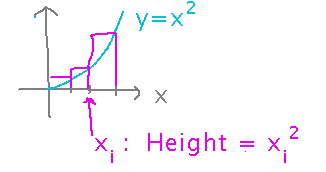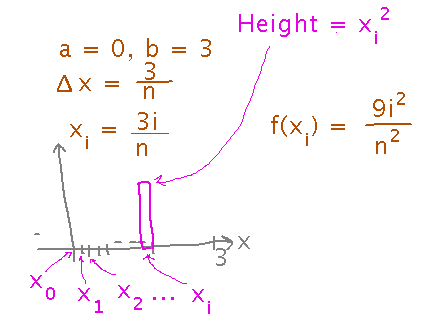Misc
SI session this evening, 6:00 - 7:30, Fraser 104.
Questions?
Definite Integrals
Section 5.2.
Key Idea(s)
The definite integral is the limit of a Riemann sum as the number of intervals goes to infinity, i.e., the same sum as computes the area under a graph.
Picking Up from Friday
We developed a Riemann sum to estimate the area under the curve y = x2 from x = 0 to x =3, and estimated it to be 5.6875 square units.
Now, based on example 5.7, see if you can extend that and evaluate the integral of x2 from 0 to 3 as a limit of a Riemann sum.
Start by sketching the function and rectangles for a Riemann sum, identify some of the pieces from Friday:

Now fill in a more detailed description, matching the first few steps of the example (namely identifying the width of the intervals, where the xi are, etc.

Then, still following the example, write down and simplify the Riemann sum:

Finally, find the integral’s value by taking the limit of the sum as n goes to infinity. Techniques we recently saw for finding limits at infinity are useful here.

Next
Evaluating integrals as Riemann sums is a pain; there must be a better way
Start looking at using algebraic properties of integrals to make them easier to evaluate.
Read “Properties of the Definite Integral” in section 5.2.